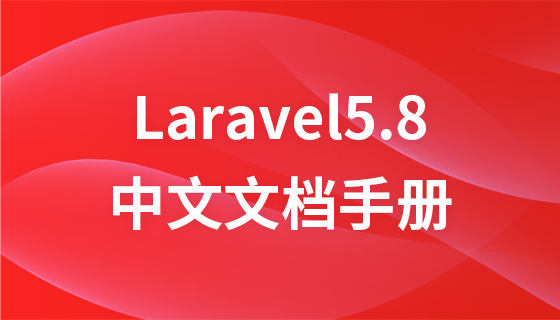
本文旨在解决 Laravel Eloquent 模型中,当使用 `hasOne` 关系获取关联模型的属性时,可能遇到的命名冲突问题,并提供清晰的解决方案和最佳实践,帮助开发者更有效地管理模型关系和属性访问。
在使用 Laravel Eloquent ORM 时,我们经常需要通过模型之间的关系来获取关联数据。hasOne 关系是一种常见的关系类型,用于定义一个模型拥有另一个模型的单个实例。然而,当尝试通过 hasOne 关系访问关联模型的属性时,可能会遇到命名冲突的问题,导致无法正确获取所需的数据。本文将深入探讨这个问题,并提供解决方案和最佳实践。
假设我们有 Player、Monster、MonsterSpecies 和 MonsterColor 四个模型,它们之间的关系如下:
在 Monster 模型中,我们定义了 species() 和 color() 两个 hasOne 关系,分别关联到 MonsterSpecies 和 MonsterColor 模型。同时,我们还定义了 getSpeciesAttribute() 和 getColorAttribute() 两个访问器 (Accessor),试图直接返回关联模型的 name 属性。
class Monster extends Model
{
use HasFactory;
protected $fillable = [
'name',
'level',
'currHealth',
'maxHealth',
'strength',
'defense',
'movement',
'species',
'color'
];
public function player()
{
return $this->belongsTo(Player::class);
}
public function species()
{
return $this->hasOne(MonsterSpecies::class,'id','species_id');
}
public function color()
{
return $this->hasOne(MonsterColor::class,'id','color_id');
}
public function getSpeciesAttribute()
{
return $this->species->name;
}
public function getColorAttribute()
{
return $this->color->name;
}
}问题在于,getColorAttribute() 和 getSpeciesAttribute() 这两个访问器创建了名为 color 和 species 的 "虚拟" 属性。同时,color() 和 species() 关系方法也创建了同名的虚拟属性。因此,当我们尝试通过 $this->color 或 $this->species 访问关联模型的 name 属性时,实际上访问的是关系方法创建的虚拟属性,而不是访问器定义的逻辑。
解决这个问题最简单的方法是重命名访问器,避免与关系方法名称冲突。例如,可以将 getColorAttribute() 重命名为 getColorNameAttribute(),将 getSpeciesAttribute() 重命名为 getSpeciesDescriptionAttribute()。
public function getColorNameAttribute()
{
return $this->color->name;
}
public function getSpeciesDescriptionAttribute()
{
$colors = explode("_", $this->color->name);
return sprintf(
"Your monster's color is %s",
implode(" and ", $colors)
);
}现在,我们可以通过 $player->monsters[0]->color_name 或 $player->monsters[0]->species_description 来访问关联模型的 name 属性。
除了解决命名冲突问题,还有一些其他的注意事项可以帮助我们更好地使用 Eloquent 模型关系:
$fillable 属性: color 和 species 字段不应该出现在 $fillable 属性中,因为它们不是数据库中的实际列,而是外键。$fillable 属性应该只包含可以被批量赋值的数据库列。
关系方法中的列名: 在定义关系方法时,如果外键和本地键的命名符合 Laravel 的默认约定,则不需要显式声明列名。例如,$this->hasOne(MonsterColor::class,'id','color_id') 可以简化为 $this->hasOne(MonsterColor::class)。
关系方法的命名: 如果一个关系返回的是一个集合 (Collection),应该使用复数形式命名关系方法。例如,$player->monster 应该改为 $player->monsters。
预加载 (Eager Loading): 为了避免 N+1 查询问题,可以使用预加载来一次性加载所有需要的关系数据。例如,$player = Player::with('monsters.color', 'monsters.species')->first();。
通过本文的讲解,我们了解了在 Laravel Eloquent 模型中使用 hasOne 关系获取属性时可能遇到的命名冲突问题,并提供了解决方案和最佳实践。通过避免命名冲突、正确使用 $fillable 属性、遵循关系方法的命名约定以及使用预加载,我们可以更有效地管理模型关系和属性访问,提高应用程序的性能和可维护性。
以上就是Laravel Eloquent 模型中通过 hasOne 关系获取属性的详细内容,更多请关注php中文网其它相关文章!

每个人都需要一台速度更快、更稳定的 PC。随着时间的推移,垃圾文件、旧注册表数据和不必要的后台进程会占用资源并降低性能。幸运的是,许多工具可以让 Windows 保持平稳运行。




Copyright 2014-2025 https://www.php.cn/ All Rights Reserved | php.cn | 湘ICP备2023035733号